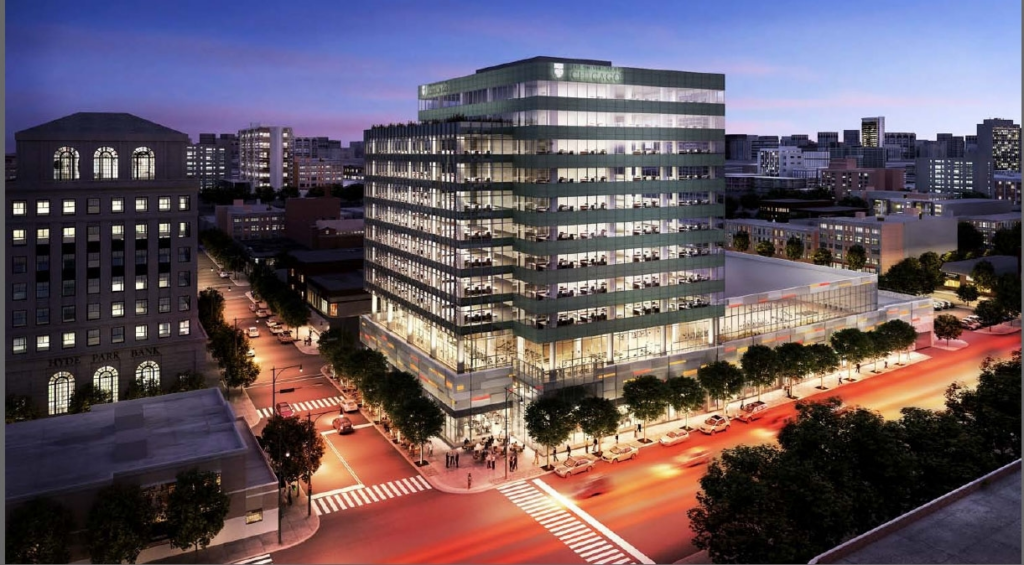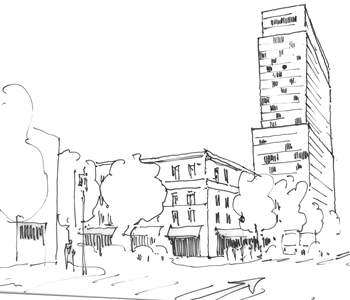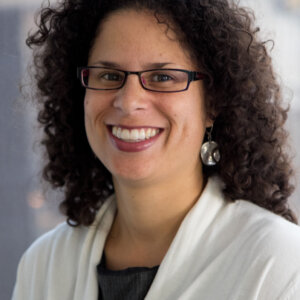Hyde Park Residents Drive New Anchor Development

MPC Research Assistant Wilmar Molina contributed to this post.
Community vision driving development is the core principle behind the Metropolitan Planning Council’s (MPC) Corridor Development Initiative (CDI), and even in the midst of a recession, we are excited to point to the fruits of this process.
Located in the heart of Chicago’s Hyde Park neighborhood at the northwest corner of 53rd Street and Lake Park Avenue, construction is now underway on the Harper Court redevelopment. One of the largest redevelopment efforts in Hyde Park in decades, this two-phase development will consist of up to 425 residential units, 150,000 square feet of office space, approximately 100,000 square feet of retail space, a 131-room Hyatt Place hotel and public spaces. At approximately $137 million, the project’s first phase, including office, retail and hotel, is among the largest private-sector developments in the City of Chicago. Harper Court will include a range of sustainable building and neighborhood design best practices, and the development team is pursuing U.S. Green Building Council Leadership in Energy and Environmental Design (LEED) certifications. The Harper Court Partners, LLC team’s long-awaited investment is significant, but for us, what is most exciting is that the size, scale, and concept for this site were all defined by the 53rd Street Vision Workshop, a year-long community process in 2008-2009 facilitated by the Chicago Metropolitan Agency for Planning and MPC, using MPC’s CDI process.
Creating a community vision with the assistance of wooden blocks may appear simplistic, but it is more than child’s play. Real estate development can be intimidating and often community participation in development only occurs after a developer is in place and a deal is being planned. In Hyde Park, we did things differently. On Nov. 15, 2008, more than 125 Hyde Park residents worked with development, planning, and architecture facilitators to experiment with their own development ideas. They used a financial pro forma, maps, and blocks that represented building massing, green space, and parking for three sites along 53rdStreet, including the Harper Court site, which was largely owned by the University of Chicago. Early concerns that a dense development would disrupt the community character were alleviated as residents worked to apply the appropriate scale to the site, come up with design solutions, and adjust the cost and revenue structure to “make the numbers work.”

Example of community generated rendering of the Harper Court site by Romero Cook Design Studio
The Harper Court project is a testament to turning community input into reality. After the completion of the workshop, the University of Chicago issued a Request for Qualifications (RFQ) to the development community and included the results of the workshop in the RFQ package. The development team has used the results of the workshop not only in their site plans, but in their marketing materials for potential tenants. Retail and office leasing are underway, and the team anticipates phase one construction will be completed in mid-2013. The Harper Court project’s first phase is projected to create at least 650 union construction jobs (approximately one-third directed to minority and women-owned businesses, with a specific emphasis on residents of the South Side) and more than 880 permanent jobs: 350 retail, 500 office, and 30 hotel. Comparable projects have resulted in a 400 percent sales tax revenue increase.
Construction of the Hyatt Place hotel will begin in the coming weeks and is slated to open in spring 2013, projecting nearly 50,000 overnight guests to Hyde Park each year.
Over the last four years, MPC has supported similar Corridor Development Initiative processes in Aurora and Chicago’s North Lawndale and Logan Square communities. Contact me if you’d like to learn more about this community-based approach to development.
